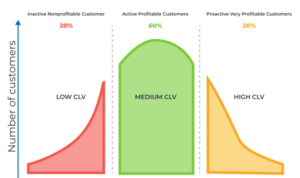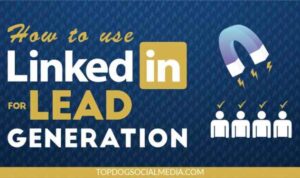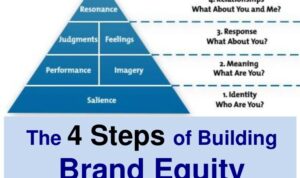Building a Subscription-Based Model is all about creating a sustainable revenue stream through repeat customers. Imagine a world where your business thrives on consistent income without constantly chasing new sales. Sounds pretty sweet, right? Let’s dive into the ins and outs of this innovative business model and how you can leverage it to skyrocket your success.
In this guide, you’ll uncover the secrets to constructing a subscription-based model that not only keeps your customers coming back for more but also revolutionizes the way you do business. Get ready to unlock the power of recurring revenue and take your brand to new heights.
Introduction to Subscription-Based Models: Building A Subscription-Based Model

A subscription-based model is a business strategy where customers pay a recurring fee at regular intervals to access a product or service. This model offers a steady stream of revenue for businesses and creates a loyal customer base.
Implementing a subscription-based model can provide several benefits for businesses, such as predictable revenue, increased customer retention, and the ability to tailor offerings to individual customer needs. It also allows companies to gather valuable data on customer behavior and preferences.
Examples of Successful Companies
- Netflix: The streaming giant offers monthly subscriptions for access to a wide variety of movies and TV shows, leading to a massive subscriber base.
- Amazon Prime: Amazon’s subscription service provides members with benefits like free shipping, streaming services, and exclusive deals, driving customer loyalty.
- Adobe Creative Cloud: Adobe offers a subscription-based model for its creative software, ensuring users have access to the latest updates and features.
Key Components of Building a Subscription-Based Model
Setting up a subscription-based model requires several key components to ensure its success. One crucial element is customer segmentation, which involves dividing customers into distinct groups based on their needs, preferences, and behaviors. This allows businesses to tailor their subscription offerings to different customer segments, increasing the likelihood of customer satisfaction and retention.
Importance of Customer Segmentation
Customer segmentation plays a vital role in a subscription-based model as it helps businesses understand their customers better. By segmenting customers, businesses can create personalized subscription packages that cater to the specific needs and preferences of each group. This leads to increased customer satisfaction, loyalty, and ultimately, higher retention rates. Additionally, customer segmentation enables businesses to target their marketing efforts more effectively, resulting in improved customer acquisition and revenue generation.
- Segmenting customers based on demographics, psychographics, and behaviors
- Creating tailored subscription packages for each customer segment
- Improving customer satisfaction and retention rates
- Enhancing marketing strategies and customer acquisition
Customer segmentation is the key to unlocking the full potential of a subscription-based model by offering personalized experiences and building lasting relationships with customers.
Determining Pricing Strategies for Subscriptions, Building a Subscription-Based Model
When it comes to pricing strategies for subscriptions, businesses must consider various factors such as the value they provide to customers, competitors’ pricing, and customers’ willingness to pay. It is essential to strike a balance between offering competitive prices and generating sufficient revenue to sustain the subscription model.
- Conducting market research to understand competitors’ pricing and customer preferences
- Offering different subscription tiers with varying features and prices
- Testing pricing strategies through A/B testing and analyzing customer feedback
- Monitoring subscription metrics such as churn rate, customer lifetime value, and average revenue per user
Effective pricing strategies are crucial for the success of a subscription-based model, as they impact customer acquisition, retention, and overall profitability.
Customer Acquisition Strategies
When it comes to building a successful subscription-based model, customer acquisition is key. Let’s dive into different methods for acquiring customers, compare organic versus paid acquisition, and explore how to retain customers once you’ve got them hooked.
Organic Customer Acquisition
Organic customer acquisition involves attracting customers through non-paid channels such as content marketing, social media, , and word-of-mouth. This method focuses on building relationships and trust with potential customers without directly paying for their attention.
- Create valuable content: By producing high-quality content that resonates with your target audience, you can attract customers who are genuinely interested in your offerings.
- Engage on social media: Utilize platforms like Instagram, Facebook, and Twitter to engage with your audience, share valuable insights, and build a community around your brand.
- Optimize for : Improve your website’s search engine visibility by optimizing your content for relevant s and providing a seamless user experience.
- Leverage word-of-mouth: Encourage satisfied customers to refer their friends and family by offering incentives or rewards for successful referrals.
Paid Customer Acquisition
Paid customer acquisition involves investing in advertising and marketing campaigns to reach a larger audience and drive conversions. While this method requires a financial investment, it can yield faster results and help scale your customer base more quickly.
- Google Ads: Run targeted ads on Google to reach customers actively searching for products or services like yours.
- Facebook Ads: Utilize Facebook’s detailed targeting options to reach specific demographics and interests that align with your target market.
- Influencer Partnerships: Collaborate with influencers in your industry to promote your subscription service to their followers and leverage their credibility and reach.
- Affiliate Marketing: Partner with affiliates who can promote your subscription service on their platforms in exchange for a commission for each successful referral.
Customer Retention Strategies
Once you’ve acquired customers for your subscription-based model, it’s crucial to focus on retaining them to ensure long-term success and profitability. Here are some strategies to keep your customers engaged and subscribed.
- Personalize the experience: Tailor your offerings and communications to each customer’s preferences and behaviors to make them feel valued and understood.
- Provide ongoing value: Continuously deliver valuable content, products, or services that meet your customers’ needs and expectations to keep them coming back for more.
- Offer loyalty rewards: Implement a loyalty program that rewards customers for their continued support and encourages them to remain subscribed for exclusive benefits.
- Solicit feedback: Regularly collect feedback from your customers to understand their satisfaction levels, identify areas for improvement, and show that you value their opinions.
Technology and Tools for Managing Subscriptions

When it comes to managing subscriptions effectively, there are several software tools available that can streamline the process and ensure smooth operations. These tools play a crucial role in automating tasks and improving customer relationship management in a subscription-based model.
Software Tools for Managing Subscriptions
Utilizing the right software tools can make a significant difference in managing subscriptions efficiently. Some popular tools include:
- Subscription Management Platforms: Platforms like Chargebee, Recurly, and Zuora provide comprehensive solutions for subscription billing, invoicing, and revenue management.
- Customer Relationship Management (CRM) Systems: CRM systems like Salesforce, HubSpot, and Zoho CRM help businesses track customer interactions, manage leads, and personalize communication with subscribers.
- Accounting Software: Tools like QuickBooks and Xero can integrate with subscription management platforms to streamline financial processes and ensure accurate reporting.
Role of Customer Relationship Management (CRM) Systems
CRM systems play a crucial role in a subscription-based model by centralizing customer data, tracking customer interactions, and enabling personalized communication. By leveraging CRM systems, businesses can:
- Segment Customers: CRM systems allow businesses to segment customers based on behavior, preferences, and engagement levels, enabling targeted marketing campaigns.
- Automate Communication: Automated email workflows and personalized messaging can be set up within CRM systems to nurture leads, onboard new subscribers, and reduce churn.
- Track Customer Lifecycle: By tracking customer interactions and touchpoints, businesses can gain insights into the customer lifecycle and tailor their offerings accordingly.
Automation in Subscription Management
Automation plays a vital role in streamlining subscription management processes and reducing manual tasks. By implementing automation, businesses can:
- Automate Billing and Invoicing: Automated billing processes can ensure timely invoicing, payment processing, and subscription renewals, improving cash flow and customer satisfaction.
- Manage Subscriptions Efficiently: Automation can handle subscription upgrades, downgrades, and cancellations seamlessly, reducing errors and enhancing customer experience.
- Personalize Customer Experience: Automated workflows can personalize communication, recommend relevant products, and engage customers at various touchpoints, enhancing overall customer experience.





